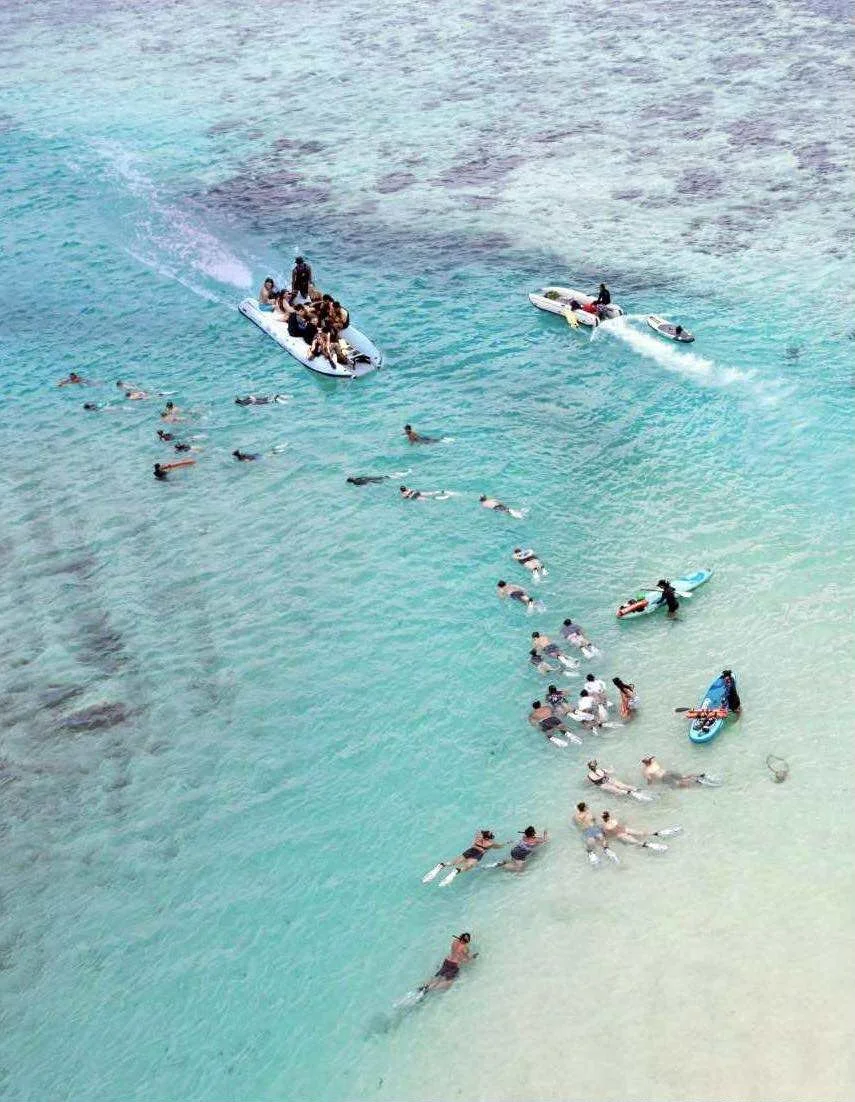Environmental Impacts of Sea Scooters and Motor Boat Taxis in Avaavaroa Passage
Rarotonga’s southern passages — Avaavaroa, Rutaki, and Papua — are among the Cook Islands’ most unique and ecologically sensitive marine environments. These clear-water channels are home to delicate coral gardens, feeding sea turtles, and thriving reef fish populations that define the beauty of our island’s underwater world. Up to 8 inflatable boat taxis with 15 horse powered 2-stroke engines and 50 electric sea scooters can congregate at Avaavaroa passage during low tide.
The Rarotonga Southern Passages Environmental Management Plan (2025) highlights the growing vulnerability of these habitats to human activity. Two particular sources of concern are 2-stroke motor boats and underwater sea scooters, which contribute to a combination of pollution, noise disturbance, and physical stress within the passage ecosystems.
Motor Boat Taxis
Traditional 2-stroke engines, widely used in small vessels across the Pacific, emit a significant amount of unburned fuel and oil directly into the sea. Research indicates that up to 30% of the fuel-oil mixture used by these engines is discharged unburned, forming surface films and hydrocarbon residues in the water.
In Avaavaroa Passage, this pollution tends to linger. It adheres to coral surfaces, blocking sunlight essential for photosynthesis and damaging the fragile symbiosis between coral and the algae that sustain it. Over time, this can:
Reduce coral growth and recovery rates
Interfere with coral spawning and reproduction
Contaminate plankton and microorganisms that support reef ecosystems
In addition, exhaust from 2-stroke motors contains carbon monoxide, nitrogen oxides, and unburned hydrocarbons, all of which can change water chemistry and elevate stress levels in marine species.
Sea Scooters
Underwater sea scooters, often used by snorkellers to cover larger areas, are another source of impact in coral reef environments. While they may appear harmless, these devices generate noise and vibration that travel far underwater, where sound moves nearly four times faster than in air.
Many marine species depend on sound to feed, navigate, and communicate. The mechanical hum of a sea scooter can cause stress and behavioural changes among species that inhabit the passage.
In areas like Avaavaroa, this type of noise disturbance can:
Interrupt turtles while feeding or resting
Disturb reef fish communication and grazing behaviour, contributing to algal overgrowth on coral surfaces
Increase stress and energy expenditure in sensitive organisms
Even corals, which appear unaffected to the human eye, respond to vibration. Continuous noise exposure can cause coral polyps to retract and reduce feeding activity, slowing growth and weakening resilience over time.
Both 2-stroke engines and underwater devices contribute to micro-pollution, caused by small but continuous leaks of fuel and lubricants. These contaminants create thin films on the surface and accumulate in sediments. In confined lagoon environments, this can lead to long-term degradation of coral ecosystems.
According to the Environmental Management Plan (2025), hydrocarbon residues can:
Block oxygen exchange and suffocate coral polyps
Encourage algal blooms that smother living coral
Disrupt the delicate chemical balance of lagoon water
Chronic contamination of this kind weakens coral structure, reduces biodiversity, and leaves reef systems more vulnerable to bleaching and storm damage.
Avaavaroa Passage is not only an important site for tourism and recreation — it is also a critical ecosystem supporting sea turtles, reef fish, and coral species unique to Rarotonga. The cumulative effects of fuel leakage, underwater noise, and mechanical disturbance represent a serious threat to the long-term health of this environment.
Even subtle, repeated disturbances can lead to coral loss, fewer fish, and changes in animal behaviour. The future of Avaavaroa Passage depends on how carefully human activity is managed within it, and how well we understand the unseen impacts beneath the surface.

